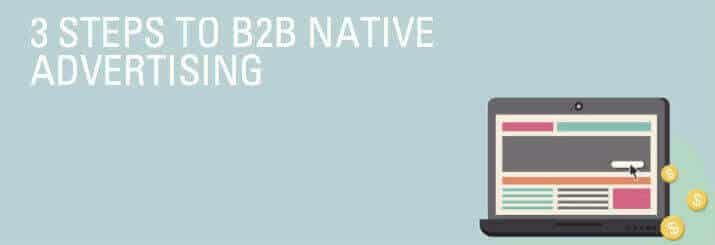You may have heard “native advertising” tossed around the marketing blogosphere recently. Or maybe you’re noticing an increase in branded content on your favorite sites like Facebook, Buzzfeed or Forbes. Yet you’re thinking, “This is cool, but it isn’t right for my business.”
Think again. Native advertising seems like the new thing, but many of the tactics have been in a marketer’s wheelhouse for the past few years. Essentially, it’s paying for placement but instead of a traditional ad, content such as branded articles, product promotions, guides and more are pushed to the reader. Ideas such as sponsored social advertising, search marketing, in-feed advertising and content marketing are now being housed under the “native advertising” umbrella term. Investment banking firm LUMA Partners sums up native advertising nicely:
Looks like a mess? Don’t be discouraged. While this snapshot provides a good overview of the native advertising landscape, what’s critical for B2B marketing is drilling down to the pockets that fit the brand and ideal client. We’ve simplified the chart above into three simple steps:
1) Find the message
It’s a weird concept that native advertising is there to sell, but the content shouldn’t. Balancing the line between promoting a product or service—but still providing value to your readers—is a challenge. B2B marketers doing it well aren’t starting with the product or service, but are starting with content useful to the audience. Content that performs well typically does not try to sell at all, instead it links the B2B brand back to an overall idea. For example, GE partners with Buzzfeed on regular articles. They’re not talking about their technology or R&D, rather posting articles such as “20 Ways You Know You’re A Creative.” Why? Because creative thinking links back to GE’s larger brand promise and tagline, “imagination at work.”
2) Find the people
Maybe your budget isn’t mammoth GE proportions. And that’s fine! Placement in top tier media is great, but for small to mid-sized firms this isn’t as realistic. Start small and look in your target audience, asking yourself, “Where are they consuming information about my industry?” Examining where your audience already is (whether it’s a digital publication, social platform or blog) sheds light on not only their interests, but also areas your business can help them. For example, the below LinkedIn Sponsored Post by OfficeMax is targeting small business owners and sales associates with a content piece specific to their needs: a winning sales proposal.

3) Follow up with data
So you put all that work into a creative and informative native ad. Now what do you do? Your native ad should highlight a clear call to action to visit a landing page, download a guide, contact your sales team or simply follow you on social media. Track these engagements to determine if you should modify the two steps above. Rinse. Repeat.
Regardless of industry, customers are consuming more content than ever. If you’re wondering where to get started, download our Master Paid Advertising in Social Media guide to learn how you can start native advertising on social media. See what we did there?



